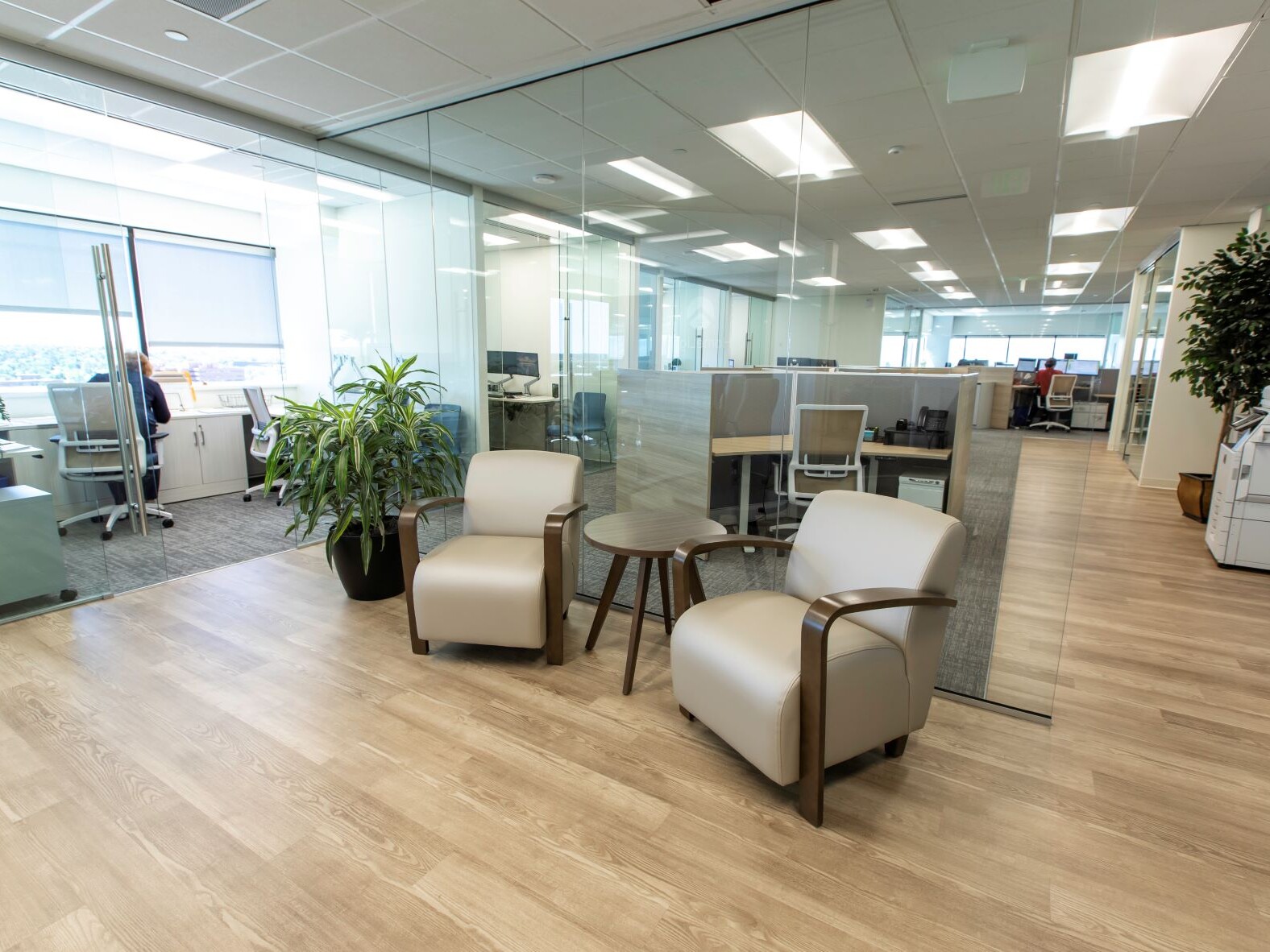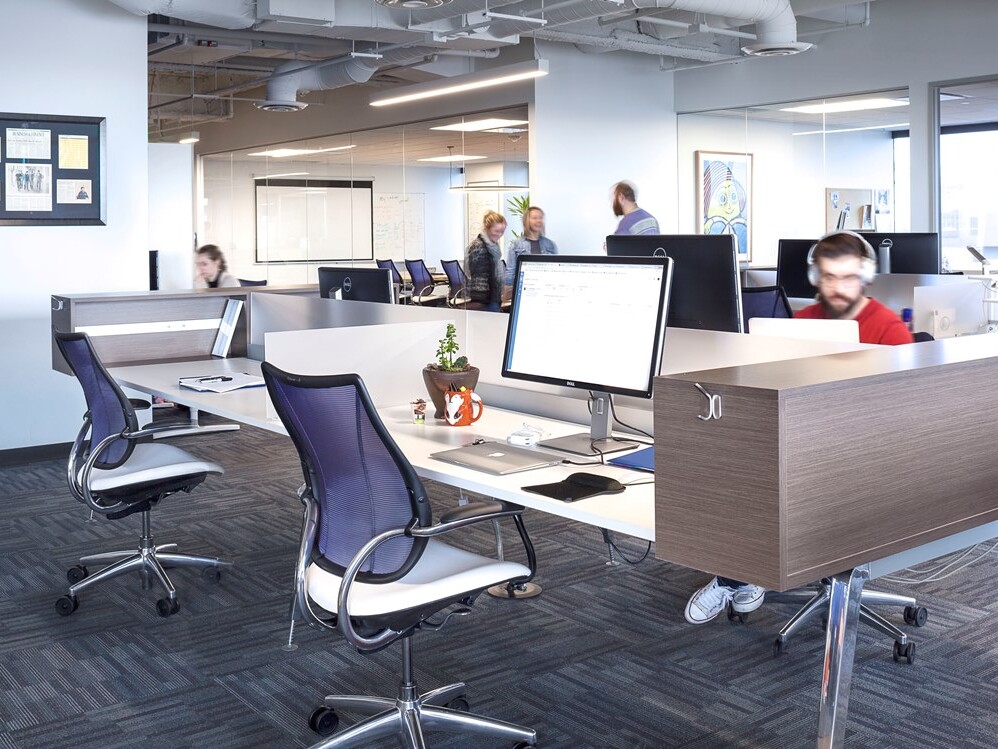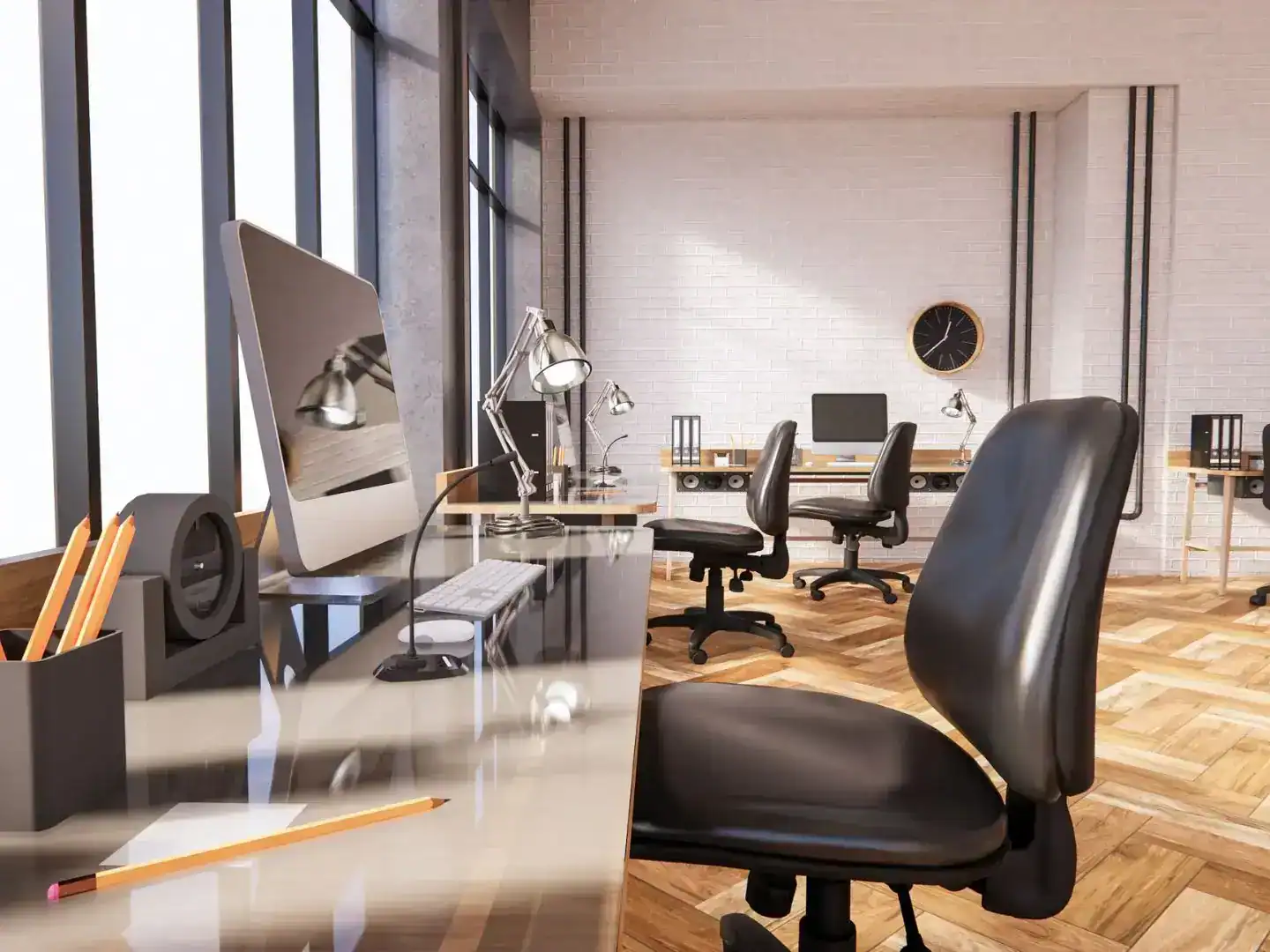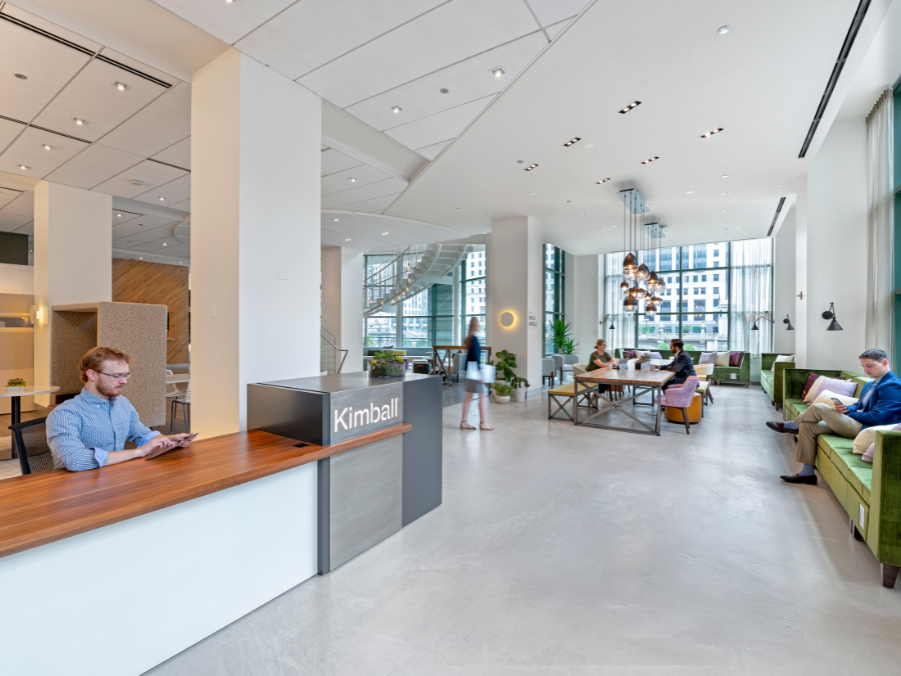In the constant quest for higher productivity in the office, companies opt for a variety of re-design practices — from activity-based workspaces to ergonomic chairs to inviting breakrooms. Yet, many overlook a simple but vital element in employee satisfaction and efficiency: the impact of lighting.
Consider a recent study that involved a re-haul of the lighting system in a traditional office: employee accuracy increased by 12%, employee productivity increased by 18%, 50% of employees stated that they felt healthier, and 76% of employees stated that they were happier. All of this stemmed from the installation of a new lighting system.
Here are some strategies for improving lighting and getting the best out of everyone in the office:
Utilize Natural Light Where Possible
If you’ve ever worked in a windowless, fluorescent-lit workspace, you likely know the calm relief of stepping out of the office, into the sun’s natural light. This has a lot to do with our biology — specifically, the circadian rhythm.
In short, our bodies respond to light sources by releasing a variety of hormones, which greatly affect our mood and energy levels. In the morning, strong sunlight tells our bodies to release high levels of cortisol, while withholding the release of melatonin, all of which keeps us alert and engaged. In the evening, the fading sunlight curbs our production of cortisol and increases that of melatonin, leading to easy sleep. Any unnatural shift in this rhythm can affect sleeping patterns, mental acuity, and energy levels.
Unfortunately, many workspaces utilize lighting that is too dim or too harsh, and totally constant. When light sources are working against our biology, imbalance arises. When light sources align with the circadian rhythm, however, sleep quality improves and depression decreases.
Natural light from large windows, especially in sunny Colorado, can help with encouraging a healthy and stable circadian rhythm.
Utilize “Daylight” Lamps
Not all light sources are created equal. Bulbs that shine higher on the Color Temperature (or Kelvin) scale have been proven to improve the well-being and productivity of office employees. In ensuring that your bulbs are at least 4,600K on this scale, you’ll be closer to replicating natural light. And don’t be afraid to go even higher. Studies from the University of Greenwich indicated that “blue-enriched” lights at 7,000K reduced eye strain and improved happiness in employees.
Utilize Different Lights for Different Spaces
Though blue-enriched, daylight lamps might improve alertness and energy, not every space is all about productivity. A break room might be better served utilizing warmer lights that sit under 3,000K, as this range is more akin to firelight and is suited to a relaxing, even intimate atmosphere. Mid-range bulbs between 3,000K and 4,500K offer an in-between, fitting for conference rooms or spaces that call for an inviting yet serious vibe.
Utilize Lighting Systems that Change Throughout the Day
Time-controlled lighting systems represent the newest innovation in office lighting. They allow for the color temperature and intensity of your lights to shift during the course of the day, more directly replicating the dynamic quality of natural light. These kinds of systems gel with our circadian rhythms, eliminating the concern that the bulbs you use are affecting your employees’ sleep. Another added benefit? These systems can be programmed to reduce light intensity in windowed rooms when the sun is at its brightest, saving you money on energy costs.
If you’re ignoring lighting in the workspace, you’re neglecting one of the simplest ways to improve the quality of your office, and by extension, the happiness and productivity of employees. At Environments, we can direct you to the best lighting options and space design for your needs. Contact us today to learn more.









